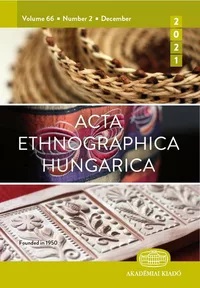Trauma Processing and “Prolonged Social Traumas” in the World of a Synagogue
Trauma Processing and “Prolonged Social Traumas” in the World of a Synagogue
Author(s): Katalin Baloghné TóthSubject(s): Jewish studies, Cultural Anthropology / Ethnology
Published by: Akadémiai Kiadó
Keywords: Jewry; synagogue; Holocaust; Shoah; trauma; community; life story
Summary/Abstract: The first question addressed in this study is how to resume everyday life in a synagogue community following the cataclysm of the Shoah and how different aspects of this relaunch can be interpreted as an attempt to process the trauma of the Holocaust, either on an individual or group level. The second part of the paper revolves around the symptoms of “prolonged social trauma” in the dynamics of the changed community during the 1970s and 1980s and those of religious life in the field under study. In this case, the area in question represents a narrow locality, the Páva Street Synagogue and its community in Budapest between 1945 and 1989. Changes in the life of the community are brought to the fore via interviews using the oral history method along with press and archive sources. The Páva Street Synagogue in Ferencváros is one of the “periphery synagogues” of Budapest, where religious life with different intensities can be considered almost continuous. The synagogue, built with public funding and inaugurated in 1924, was used as an internment camp in the second half of 1944. Following the liberation of the ghettos and camps, community life began again a few months after the persecution. Between 1945 and 1956, this resumption involved a series of steps, including the physical rehabilitation of the synagogue environment and the organization of its daily routines. The events of 1956 created further difficulties for the community: the building was damaged once again and the community disintegrated. Although everyday life resumed, the symptoms of trauma manifested in the 1970s and 1980s as the community dwindled and its members grew older, leaving generations missing from the synagogue.
Journal: Acta Ethnographica Hungarica
- Issue Year: 67/2022
- Issue No: 2
- Page Range: 353-377
- Page Count: 25
- Language: English

